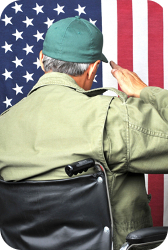The Department of Veterans Affairs will begin processing payments tomorrow for the new Post-9/11 GI Bill. The new veterans bill was designed to augment current veterans benefits such as those found in the Montgomery GI Bill, which was a de facto post-Vietnam era bill. Veterans will also have the ability to transfer benefits to family members under the legislation.
The improved benefits are expected to help nearly a half-million veterans and their families attend college next year alone. Almost $80 billion for these benefits will be paid out during the next decade.
I am happy to see an improved GI Bill to help the younger veterans and their families. Still, I can’t help but think this crop of veterans are getting shafted compared with what I had for the GI Bill and the economic situation of the times that I used them to attend college.
When I started college in 1980 I was under the post-Korea and Vietnam era GI Bill. I got a check every month I attended school. Since I was single the amount I received was $327 per month for a full load of 12 hours. That amount increased to $376 by the time I graduated in 1984. That doesn’t sound like much, but consider that tuition at state universities in Texas was $4 per semester hour during that time period, plus the fact that I worked full-time as a fireman, and one can see how I made out.
I remember on at least one occasion and perhaps maybe it happened more often than that but I received my monthly check and was able to pay tuition, fees and books for that semester just by using my monthly stipend.
A year after I graduated I returned to my alma mater, Stephen F. Austin State University, with thoughts of getting a graduate degree. Since I had only a minor in political science, which was the field I had locked onto for a possible master’s, I had to first take a few more hours to get my second bachelor’s in that field. By that time tuition had jumped to a whopping $12 per semester hour.
Looking at my old school’s Web page with its tuition calculator I see that for a full load during the upcoming fall semester the tuition is $50 per semester hour, then you start looking at fees, room and board if you live on campus, etc., and the numbers start increasing.
Even adjusting for inflation what I spent back then for various costs were a steal. In today’s dollars I would be paying $196 a month for the one-bedroom apartment I rented when I started college.
It is no wonder that when I look back on the days I went to college that I felt somewhat rich. Little wonder I feel that way since the Bureau of Labor Statistics Inflation Calculator shows that the amount I was making in combined salary and GI Bill would be more than $39,000 in today’s dollars. That’s pretty good buying power for a college guy.
So today’s veteran, when someone tells you the college they are selling is bargain then perhaps it might be. But it certainly isn’t the bargain that I had when starting school almost 30 years ago.

